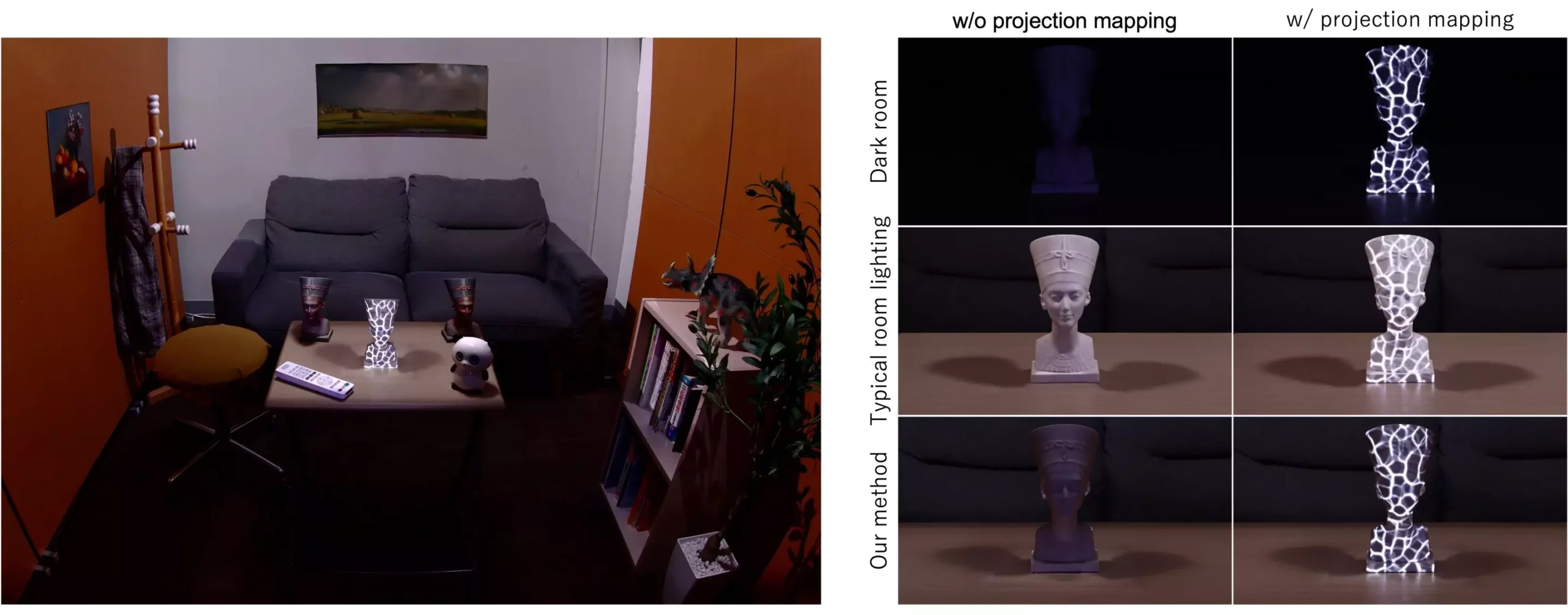Projection mapping has become an increasingly popular technology for creating immersive displays that captivate audiences. However, there is a common limitation that plagues current projection mapping systems – they only work effectively in dark environments. This poses a significant challenge as it restricts the types of objects that can be displayed and hinders the ability for viewers to interact with each other in a dark setting.
A recent study published in IEEE Transactions on Visualization and Computer Graphics by researchers from Osaka University proposes a groundbreaking solution to overcome the limitations of traditional projection mapping systems. The key idea is to use projectors to reproduce normal illumination in the room, while keeping the display object itself in shadow. By doing so, the researchers aim to create the illusion of global illumination without the need for actual global illumination.
To achieve this innovative approach, the research team utilized a combination of standard projectors to illuminate the room, along with a projector equipped with a wide aperture and large-format lens to soften the edges of shadows. By strategically positioning the projectors and adjusting their settings, they were able to project texture images onto objects without causing them to appear to glow. Instead, the textures were perceived as the true colors of the object’s surface, creating a more realistic and engaging visual experience.
The researchers’ prototype environment demonstrated the potential of their method to revolutionize projection mapping by enabling displays in well-lit environments. By expanding the number of projectors and fine-tuning their setup, they aim to create scenes that are indistinguishable from real-world three-dimensional environments. This advancement opens up new possibilities for visual design environments, particularly in industrial product design and packaging, where natural light and interactive communication play a crucial role in the design process.
Looking ahead, the researchers envision a future where projection mapping becomes a ubiquitous tool for creating realistic and interactive displays in various settings. By enabling participants to interact not only with the design under natural light but also with each other, the technology has the potential to enhance communication and improve design performance. This opens up exciting opportunities for industries seeking innovative solutions for visual communication and engagement.
The research conducted by the team from Osaka University presents a significant advancement in the field of projection mapping. By reimagining how illumination is used in projection mapping systems, they have paved the way for more versatile and realistic displays that can be enjoyed in a wider range of settings. As technology continues to evolve, the possibilities for projection mapping are boundless, offering new avenues for creativity and innovation in visual design.


Leave a Reply